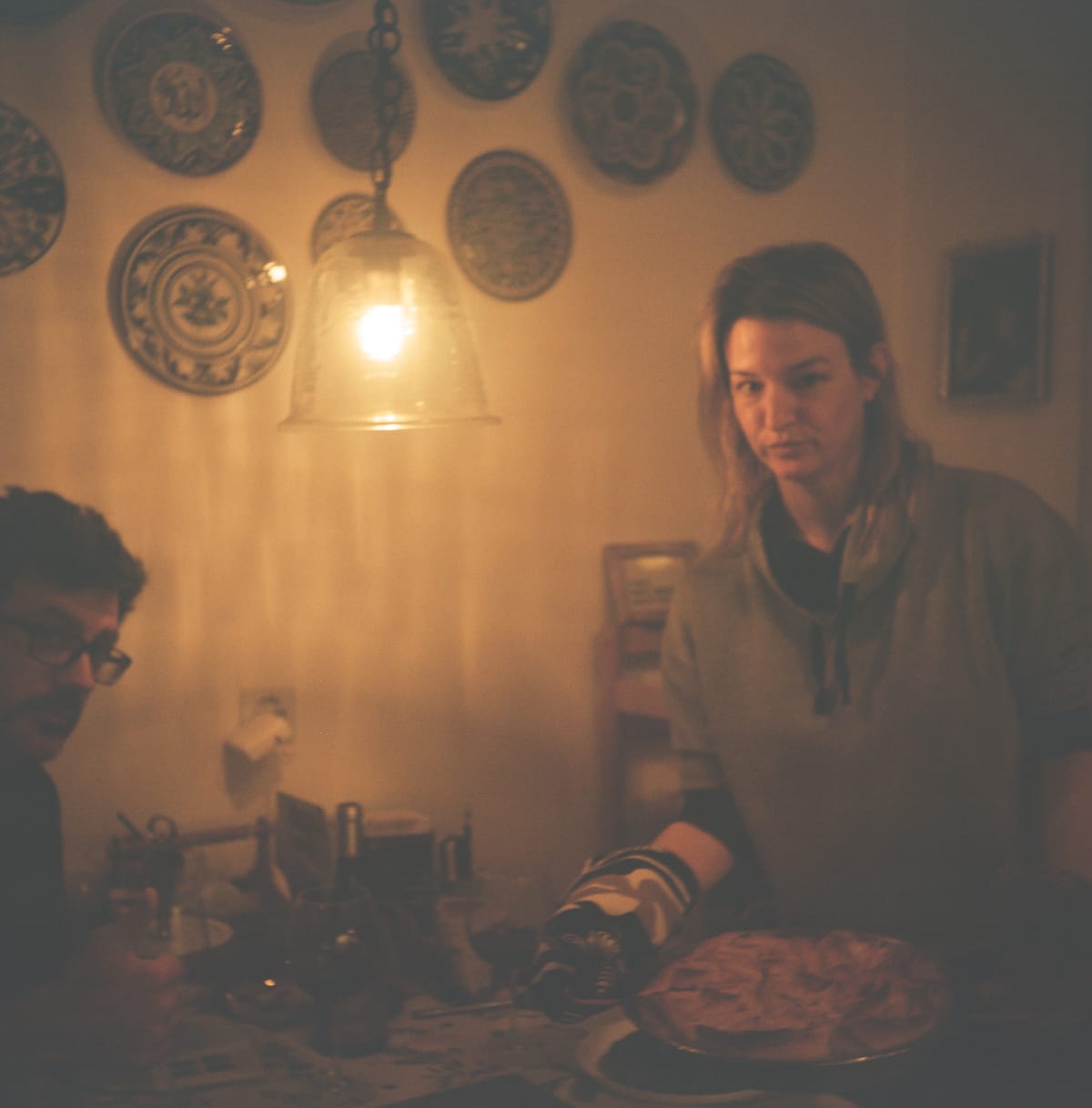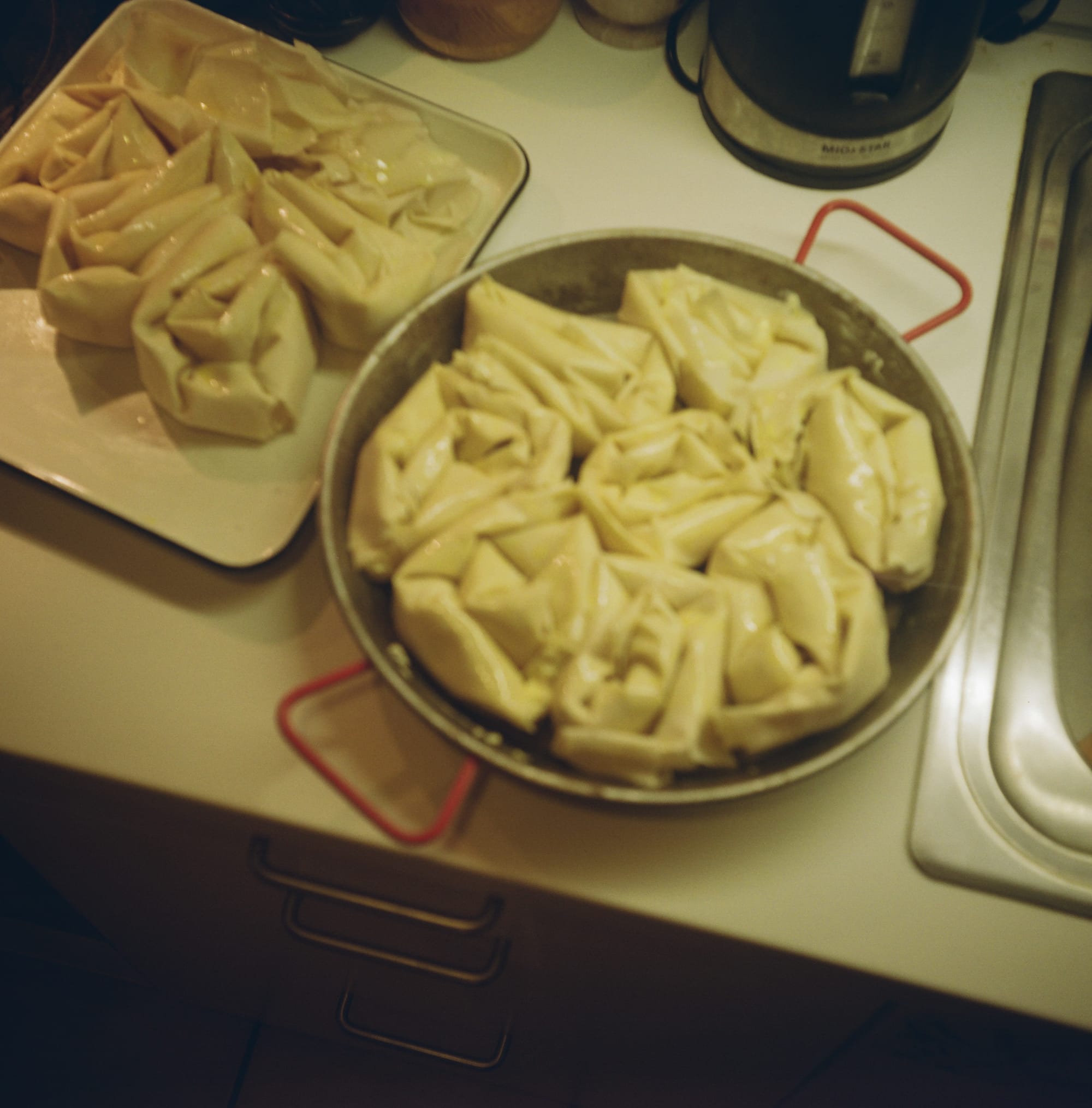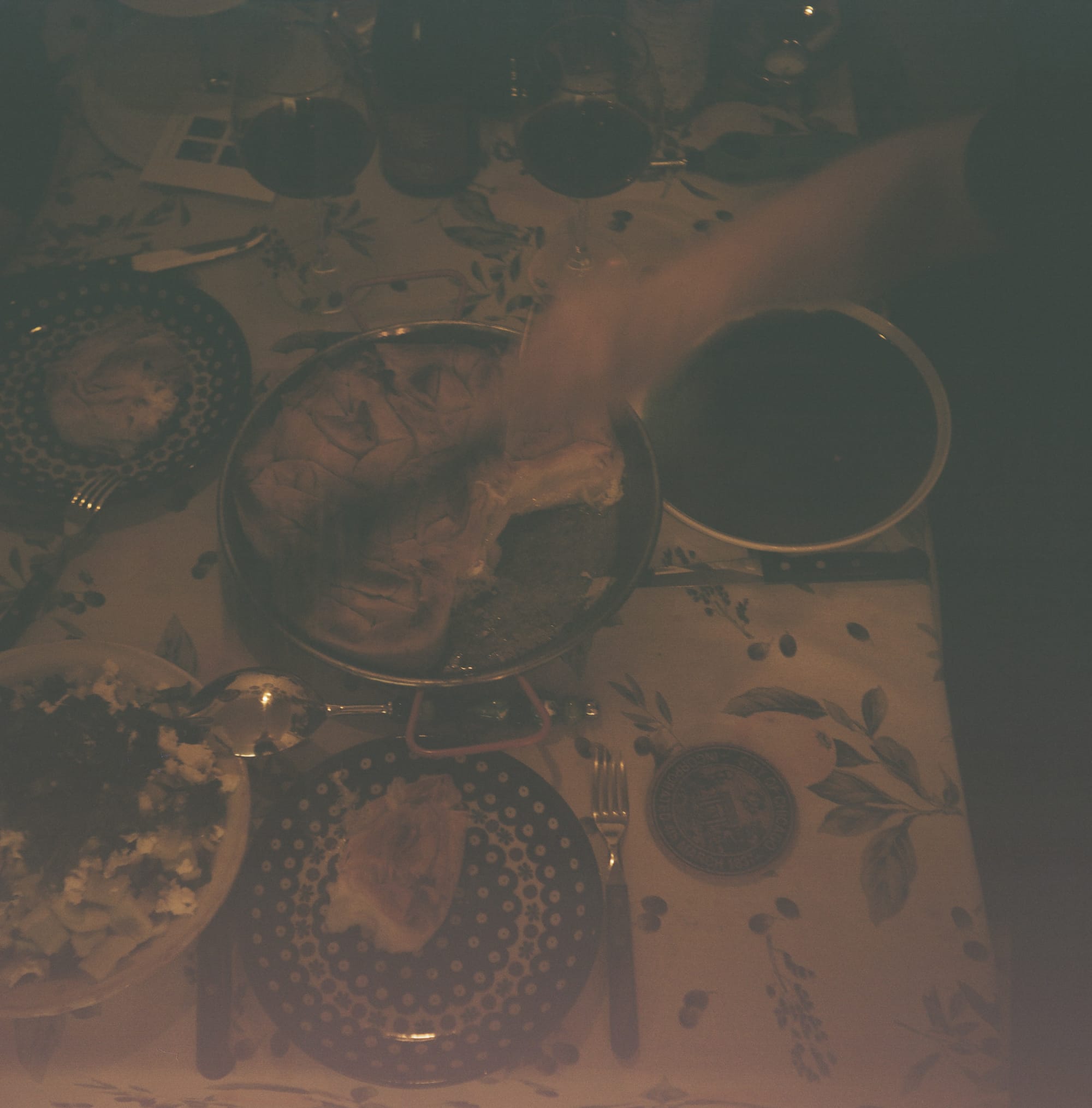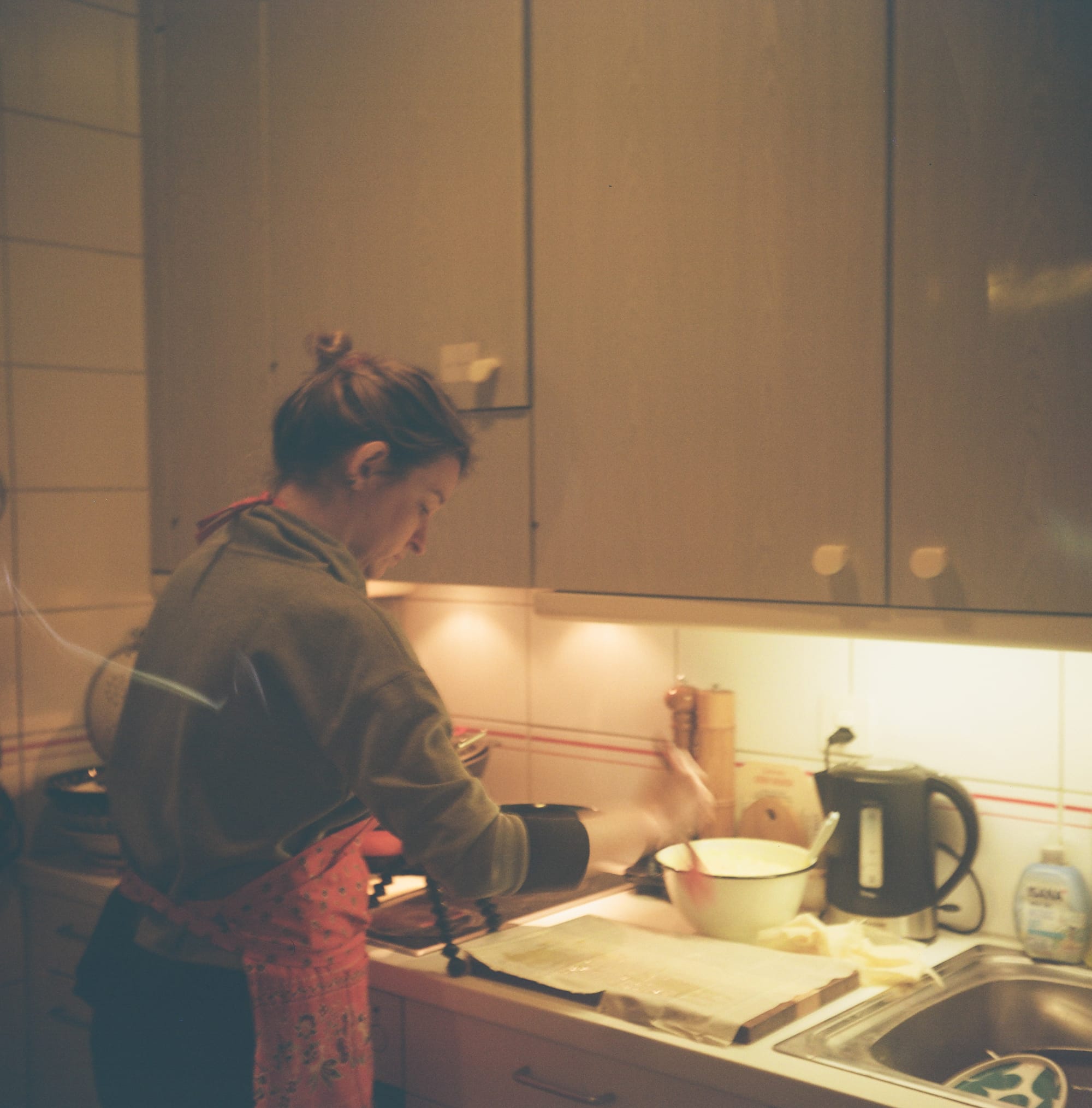What to eat BULGARIA 🇧🇬 Banitsa and shopska salad
While banitsa’s presence in Bulgaria can be traced back centuries, it is rather ambiguous whether it came from the east or the south. While the resemblance to börek is obvious...Banitsa, and börek for that matter, may have descended from Byzantine plakous or the Roman placenta...

Banitsa and shopska salad
Published April 5, 2024 · by Amanda Rivkin Häsler
Banitsa is not so different from börek, the Turkish filo pastry often served at breakfast with a bit of tea. Traditional banitsa though has yogurt, feta and eggs as a filling whereas its Turkish cousin could come in a variety of ways, whether with spinach or meat, though those fillings are on offer as well in Bulgaria, along with pumpkin and might be typical in some regions, but are not the crux of traditional banitsa.
Banitsa itself derives its name from the Slavic word for to bend or to fold. The Bulgarian dish is considered a symbol of the country’s cuisine and culture. It is traditionally served at Christmas or New Year’s, sometimes with talismans tucked inside, known as kusmeti in Bulgarian.
The cornelian cherry might be pickled and made into jam the rest of the year, but on the New Year, Bulgarians reach for a sample of the branch it comes from as well as coins to tuck inside a holiday banitsa. Alternatively, fortunes may be written on paper and wrapped in foil and tucked inside the banitsa’s coils.

As per holiday tradition, the round dish that banitsa is made in is spun around the table as if a spin-the-bottle game for American teenagers. Though instead of kissing, pieces are cut and fortunes are unveiled. Whoever gets the charms earns themselves a year of health, luck and love.
Like most Bulgarian food, banitsa is rustic and rural in its origins and construction. It is far from just a holiday meal but part and parcel of the everyday lives of many. In popular discourse, to refer to something as banitsa however implies a crumpled-up mess: a crushed vehicle, a wrinkled piece of homework – all banitsa!

While banitsa’s presence in Bulgaria can be traced back centuries, it is rather ambiguous whether it came from the east or the south. While the resemblance to börek is obvious, the ancient world of the Black Sea spans centuries, cultures and interactions of myriad empires, nomadic peoples, faiths and climates.
Banitsa, and börek for that matter, may have descended from Byzantine plakous or the Roman placenta, both dishes where honey and cheese are placed between flat cakes. Börek, a clear cousin or sibling of banitsa, is however not uniquely Ottoman despite its presence as the centerpiece of elaborate feasts of the sultan by the seventeenth century.
Delighting sultans are pre-dated by nomads and wanderers who made the dish on an open fire using a saç, a rustic flat-iron griddle that would be warmed used an open fire or hot stones before being placed over a dish. As the Bulgarian culinary expert Stefan Stefanov told Bulgarian radio BNR, “The richer a country’s history, the richer its cuisine.”
As for Bulgaria’s accompanying or second national dish, shopska salad, it too is popular across the region but has a new world vegetable (or fruit depending on where you are from), the tomato, included. The simple peasant or farmer’s salad of cucumber, peppers, tomato and feta with some parsley clearly made a slightly later entry into the region and Bulgaria’s national cuisine.
Bulgarians are attached to it for the reasons of its simple deliciousness but also its colors. Much as how modern activists have adapted the watermelon as a symbol of Palestine due to its shared colors in common with the flag, shopska salad has a white, green and red composition that too resembles the Bulgarian nation’s flag. Served with banitsa, it is simply a kaleidoscope of all that is Bulgaria but also a true offering of flavors from the Balkans.
Recipe
Ingredients:
For the banitsa:
6 small onions
250 grams of butter
625 grams of feta cheese
500 grams of Turkish, Greek or Balkan-style yogurt
3-4 eggs (depending on size)
1 teaspoon of salt
15 grams of baking powder
24 phyllo dough sheets
For the shopska salad:
6-8 small to medium-sized tomatoes
6-8 Persian cucumbers
2 Anaheim or banana peppers
1 small onion or shallot
125 grams of feta
Salt
Step 1: Dice six small onions.
Step 2: Add 250 grams of butter to a pan on low heat. Add onions. Allow to caramelize. Turn off and pull from heat when onions are soft, sweet and golden.
Step 3: While onions are caramelizing, crumble the feta cheese in a bowl with your hands or a fork. Add yogurt, eggs, salt and baking powder. Mix together, cover and place in the refrigerator.
Step 4: Strain the onions from the butter. Add the onions to the feta and yogurt mixture and blend together. Keep the butter on the side.
Step 5: Preheat the oven to 200 degrees Centigrade.

Step 6: Before butter has the chance to coagulate, pull out the phyllo dough sheets. Lay one flat and glaze with butter using a cooking brush. Place a second sheet on top. Place the yoghurt and feta mixture in a tube-like fashion at the end of the phyllo dough sheets leaving a few centimeters or an inch at the end and roll it up like a snake and then form a coil with the phyllo dough. Glaze the top of the banitsa again with butter. Place on a greased baking sheet and bake for 45 minutes.
Step 7: Dice the tomatoes, cucumbers and onion or shallot into small pieces for the shopska salad. Salt. Crumble feta on top and garnish with parsley.
Serve all at once, when the banitsa is ready!
Learn where to eat Bulgarian food in Switzerland.
Follow our social media pages @swissglobaldining on Instagram, TikTok and YouTube